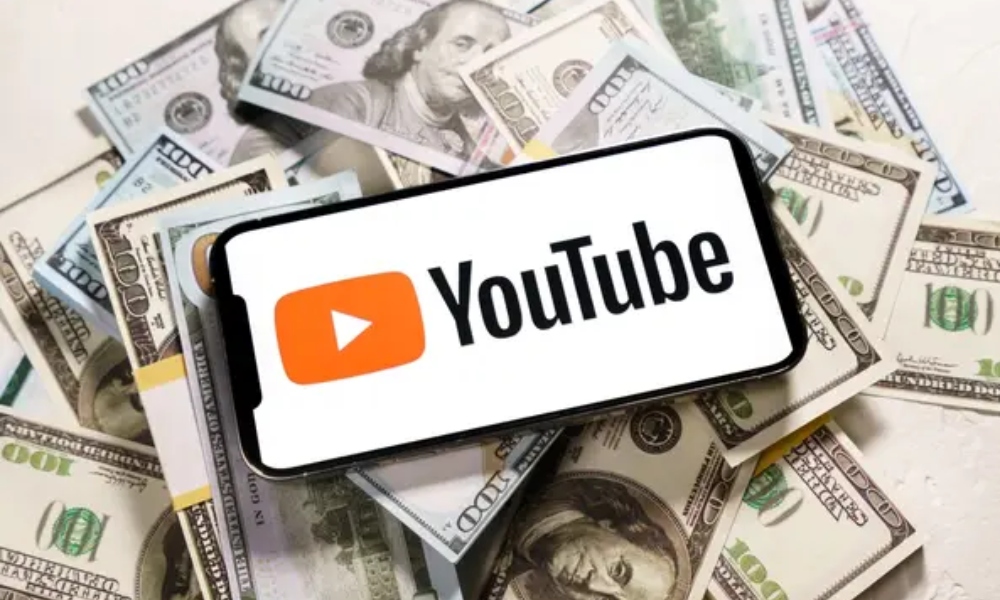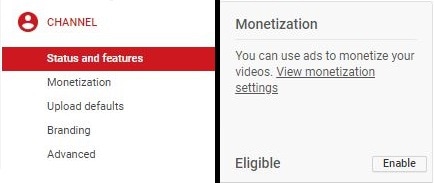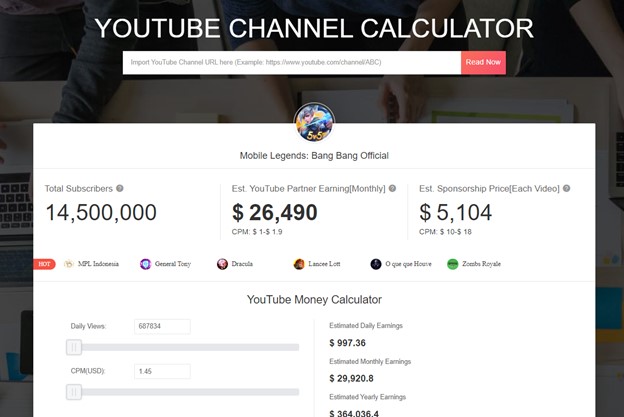Unlocking YouTube’s Earning Potential
Monetizing a YouTube channel can be a lucrative venture for creators who produce high-quality, engaging content. However, understanding how to receive money from YouTube is crucial to unlocking the platform’s earning potential. With millions of hours of content available, YouTube has become an essential platform for creators to showcase their talents and connect with their audience. To monetize a YouTube channel, creators must first meet the platform’s requirements, which include having at least 1,000 subscribers and 4,000 watch hours in the past 12 months.
Once these requirements are met, creators can apply for the YouTube Partner Program (YPP), which allows them to monetize their videos through ads. However, the process of receiving payments from YouTube can be complex, and creators must understand how the platform’s payment structure works. This includes understanding how ads are displayed, how revenue is generated, and how creators are paid. By grasping these concepts, creators can better navigate the monetization process and maximize their earnings.
YouTube’s monetization policies are designed to ensure that creators are rewarded for producing high-quality content that resonates with their audience. However, these policies can be complex, and creators must stay up-to-date with the latest changes to avoid policy violations. By understanding how to receive money from YouTube, creators can focus on producing engaging content that attracts and retains a loyal audience.
In addition to ads, creators can also earn money on YouTube through sponsorships, merchandise sales, and affiliate marketing. These alternative revenue streams can provide a significant boost to a creator’s earnings, but they require a deep understanding of the platform’s policies and the audience’s needs. By leveraging these opportunities, creators can diversify their revenue streams and build a sustainable business on YouTube.
Ultimately, unlocking YouTube’s earning potential requires a combination of creativity, persistence, and a deep understanding of the platform’s monetization policies. By following the steps outlined in this guide, creators can set themselves up for success and start earning money from their YouTube channel.
Meeting YouTube’s Monetization Requirements
To monetize a YouTube channel, creators must meet the platform’s requirements, which include having at least 1,000 subscribers and 4,000 watch hours in the past 12 months. These requirements are in place to ensure that creators have a sizable and engaged audience, which is attractive to advertisers. To track progress towards meeting these requirements, creators can use YouTube Analytics, which provides detailed insights into their channel’s performance.
YouTube Analytics allows creators to track their subscriber growth, watch time, and earnings. This data can be used to identify areas for improvement and optimize content for better performance. For example, creators can use analytics to see which videos are performing well and which ones need improvement. They can also use analytics to track their audience’s engagement, such as likes, comments, and shares.
In addition to meeting the subscriber and watch hour requirements, creators must also comply with YouTube’s community guidelines and terms of service. This includes ensuring that their content is original, does not infringe on copyrights, and does not contain hate speech or other forms of harassment. Creators who fail to comply with these guidelines risk having their channel suspended or terminated.
Once creators have met the monetization requirements, they can apply for the YouTube Partner Program (YPP), which allows them to monetize their videos through ads. The YPP is a program that allows creators to earn money from their videos by displaying ads before, during, and after their content. To apply for the YPP, creators must submit an application and agree to YouTube’s terms of service.
After applying for the YPP, creators will need to wait for their application to be reviewed. This can take several days or weeks, depending on the volume of applications. Once the application is approved, creators can start monetizing their videos and earning money from their content.
Enabling Monetization on Your YouTube Account
To enable monetization on a YouTube account, creators must first apply for the YouTube Partner Program (YPP). The YPP is a program that allows creators to monetize their videos through ads and earn money from their content. To apply for the YPP, creators must meet the eligibility requirements, which include having at least 1,000 subscribers and 4,000 watch hours in the past 12 months.
Once the eligibility requirements are met, creators can apply for the YPP by following these steps:
Step 1: Sign in to your YouTube account and navigate to the YouTube Studio.
Step 2: Click on the “Monetization” tab and select “Apply for monetization.”
Step 3: Review and agree to the YouTube Partner Program terms and conditions.
Step 4: Provide the required information, including your name, address, and tax identification number.
Step 5: Wait for your application to be reviewed and approved.
After applying for the YPP, creators will also need to set up an AdSense account. AdSense is a program that allows creators to earn money from their YouTube videos by displaying ads. To set up an AdSense account, creators must follow these steps:
Step 1: Sign in to your YouTube account and navigate to the YouTube Studio.
Step 2: Click on the “Monetization” tab and select “Set up AdSense.”
Step 3: Provide the required information, including your name, address, and tax identification number.
Step 4: Wait for your AdSense account to be approved.
Once the YPP and AdSense accounts are set up, creators can start monetizing their videos and earning money from their content. However, it’s essential to note that YouTube takes a 45% cut of the ad revenue, and creators will also need to pay taxes on their earnings.
Understanding YouTube’s Payment Structure
YouTube’s payment structure is based on a cost-per-click (CPC) and cost-per-thousand impressions (CPM) model. This means that creators earn money from their videos based on the number of clicks and views they receive. The CPC model pays creators for each click on an ad displayed on their video, while the CPM model pays creators for every 1,000 views of an ad.
The amount of money creators can earn from YouTube’s payment structure varies widely depending on factors such as the niche or topic of their content, the audience engagement, and the ad click-through rate. On average, creators can earn between $0.50 to $5 per 1,000 views, although this amount can be higher or lower depending on the specific circumstances.
YouTube also takes a 45% cut of the ad revenue, which means that creators only receive 55% of the total ad revenue generated by their videos. This is a significant reduction in earnings, but it’s essential to note that YouTube provides a vast platform for creators to showcase their content and reach a massive audience.
In addition to the CPC and CPM models, YouTube also offers other monetization options, such as sponsorships, merchandise sales, and affiliate marketing. These options can provide creators with additional revenue streams and help them diversify their income.
Understanding YouTube’s payment structure is crucial for creators who want to monetize their content effectively. By knowing how the payment structure works, creators can optimize their content to maximize their earnings and make the most of their YouTube presence.
It’s also essential to note that YouTube’s payment structure is subject to change, and creators should stay up-to-date with the latest developments to ensure they are maximizing their earnings. By staying informed and adapting to changes in the payment structure, creators can continue to earn money from their YouTube content and build a successful online business.
How to Receive Payments from YouTube
Once you’ve enabled monetization on your YouTube account and started earning money from your videos, you’ll need to set up a payment method to receive your earnings. YouTube uses AdSense to manage payments to creators, so you’ll need to set up an AdSense account and link it to your YouTube account.
To set up a payment method, follow these steps:
Step 1: Sign in to your YouTube account and navigate to the YouTube Studio.
Step 2: Click on the “Monetization” tab and select “Payment settings.”
Step 3: Click on “Add payment method” and select the payment method you want to use, such as a bank account or PayPal.
Step 4: Enter your payment information and confirm your payment method.
Once you’ve set up a payment method, you can track your earnings and receive payments from YouTube. YouTube pays creators on a monthly basis, with payments typically being made around the 21st of each month.
To track your earnings, follow these steps:
Step 1: Sign in to your YouTube account and navigate to the YouTube Studio.
Step 2: Click on the “Monetization” tab and select “Earnings.”
Step 3: View your earnings report, which will show you how much money you’ve earned from your videos.
Step 4: Use the earnings report to track your progress and make adjustments to your monetization strategy as needed.
Receiving payments from YouTube is a straightforward process, but it’s essential to ensure that you’ve set up your payment method correctly and are tracking your earnings regularly. By following these steps, you can start receiving payments from YouTube and earning money from your videos.
Additional Ways to Earn Money on YouTube
In addition to monetizing your YouTube channel through ads, there are several other ways to earn money on the platform. One of the most popular alternatives is sponsorships. Sponsorships involve partnering with a brand to promote their product or service in your videos. This can be a lucrative way to earn money, especially if you have a large and engaged audience.
Another way to earn money on YouTube is through merchandise sales. If you have a loyal audience, you can create and sell merchandise such as t-shirts, hats, and other items. This can be a great way to earn money and also promote your brand.
Affiliate marketing is another way to earn money on YouTube. Affiliate marketing involves promoting products or services from other companies and earning a commission on any sales generated through your unique referral link. This can be a great way to earn money, especially if you have a large and engaged audience.
Additionally, you can also earn money on YouTube by selling digital products such as ebooks, courses, and software. If you have expertise in a particular area, you can create digital products that teach others about that topic. This can be a great way to earn money and also establish yourself as an authority in your niche.
Finally, you can also earn money on YouTube by offering services such as consulting, coaching, or freelance work. If you have expertise in a particular area, you can offer services to others and earn money. This can be a great way to earn money and also build your personal brand.
Overall, there are many ways to earn money on YouTube beyond just monetizing your channel through ads. By exploring these alternative methods, you can increase your earnings and build a successful business on the platform.
Maximizing Your Earnings on YouTube
To maximize your earnings on YouTube, it’s essential to optimize your videos for maximum visibility and engagement. One way to do this is by choosing profitable niches that have a high demand and low competition. Researching popular topics and trends can help you identify profitable niches and create content that resonates with your audience.
Another way to optimize your videos is by creating engaging titles and thumbnails. Your title and thumbnail are the first things that viewers see when they come across your video, so it’s crucial to make them count. Use attention-grabbing titles and thumbnails that accurately represent your content and entice viewers to click on your video.
Using keywords effectively is also crucial for maximizing your earnings on YouTube. Keywords help your video rank higher in search results, making it more visible to potential viewers. Use relevant keywords in your title, description, and tags to help your video rank higher and increase your earnings.
Additionally, optimizing your video’s watch time and engagement can also help increase your earnings. Use techniques such as cliffhangers, questions, and calls-to-action to keep viewers engaged and increase watch time. You can also use YouTube’s analytics tool to track your video’s performance and make adjustments to optimize it for maximum earnings.
Finally, promoting your YouTube channel and videos on social media and other platforms can also help increase your earnings. Share your videos on Facebook, Twitter, Instagram, and other platforms to reach a wider audience and drive traffic to your YouTube channel.
By following these tips and optimizing your YouTube videos for maximum earnings, you can increase your visibility, engagement, and earnings on the platform. Remember to stay up-to-date with YouTube’s changing policies and algorithms to ensure that your content remains optimized for maximum earnings.
Common Mistakes to Avoid When Monetizing Your YouTube Channel
Monetizing a YouTube channel can be a lucrative venture, but it requires careful attention to detail and adherence to YouTube’s policies. Creators who fail to comply with these policies risk losing their monetization privileges, which can significantly impact their earnings. To avoid common mistakes and ensure a smooth monetization process, it’s essential to understand what to watch out for.
One of the most common mistakes creators make is violating YouTube’s community guidelines or terms of service. This can include uploading copyrighted content, using explicit language or imagery, or engaging in harassment or bullying. To avoid policy violations, creators should thoroughly review YouTube’s guidelines and ensure their content meets the platform’s standards.
Another mistake creators make is failing to disclose sponsored content or affiliate links. According to the Federal Trade Commission (FTC), creators must clearly disclose any sponsored content or affiliate links in their videos or video descriptions. Failure to do so can result in penalties and loss of monetization privileges.
Managing expectations is also crucial when monetizing a YouTube channel. Creators should not expect to earn significant amounts of money immediately, as building a loyal audience and generating substantial revenue takes time. Unrealistic expectations can lead to disappointment and frustration, causing creators to abandon their channels or engage in questionable practices to boost earnings.
Staying up-to-date with YouTube’s changing policies is also vital. YouTube regularly updates its policies and guidelines, and creators who fail to adapt risk losing their monetization privileges. To stay informed, creators should regularly review YouTube’s official blog and creator resources, as well as attend workshops and webinars to stay current on the latest best practices.
Finally, creators should avoid relying solely on AdSense for their earnings. While AdSense can be a significant source of revenue, it’s essential to diversify income streams to ensure long-term financial stability. This can include exploring alternative monetization strategies, such as sponsorships, merchandise sales, and affiliate marketing.
By avoiding these common mistakes, creators can ensure a successful and profitable YouTube monetization experience. Remember, building a loyal audience and generating significant revenue takes time, effort, and dedication. By staying informed, adapting to changes, and managing expectations, creators can unlock the full earning potential of their YouTube channels and receive money from YouTube through various monetization strategies.






